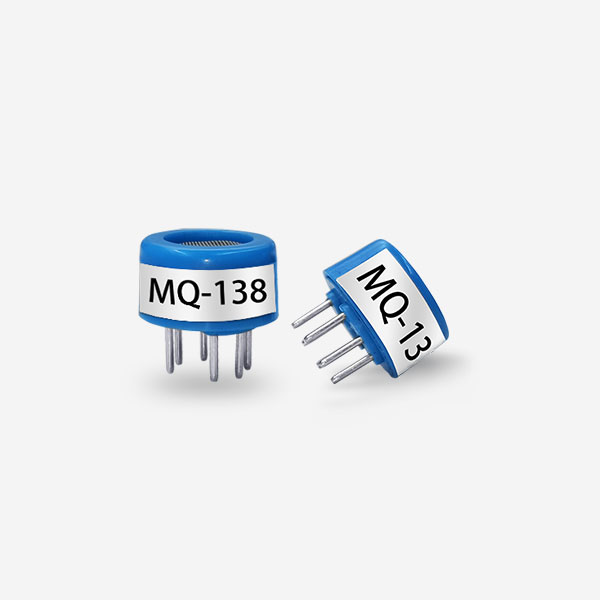Indoor air quality (IAQ) plays a crucial role in our health and well-being. With people spending a significant amount of time indoors, ensuring clean and healthy air is essential. Gas sensor technology has emerged as a powerful tool for monitoring and safeguarding indoor air quality. This article explores the significance of gas sensors in maintaining healthy IAQ, their applications, advancements, and future prospects.

Understanding Gas Sensors:
Gas sensors are devices that detect and measure the presence of various gases in the surrounding environment. They utilize different technologies such as electrochemical, optical, and semiconductor-based methods to accurately measure gas concentrations. Gas sensors can detect a wide range of indoor air pollutants, including volatile organic compounds (VOCs), carbon monoxide (CO), nitrogen dioxide (NO2), and ozone (O3).
Importance of Indoor Air Quality:
Indoor air quality directly impacts our health, comfort, and productivity. Poor IAQ can cause a multitude of health issues, including respiratory problems, allergies, headaches, and fatigue. Pollutants such as VOCs released from cleaning products, building materials, and furniture, as well as gases emitted from cooking appliances and heating systems, can accumulate indoors and lead to health hazards. Monitoring and maintaining good IAQ are vital for creating a healthy indoor environment.
Applications of Gas Sensors in Indoor Air Quality Monitoring:
Gas sensors are widely used in various applications to monitor and improve IAQ:
3.1 Residential Buildings:
Gas sensors are deployed in homes to monitor and detect indoor air pollutants. They help homeowners identify the presence of harmful gases and take appropriate actions to improve IAQ. For example, if high levels of CO are detected due to a malfunctioning heating system, gas sensors can alert homeowners to the danger and prompt them to rectify the issue immediately.
3.2 Commercial Buildings:
Large office spaces and commercial buildings benefit from gas sensors to ensure good IAQ. Gas sensors can be integrated into ventilation systems to monitor the levels of various gases regularly. They provide real-time data on pollutant concentrations, enabling building managers to take prompt corrective actions when necessary, such as adjusting ventilation rates or identifying potential pollutant sources.
3.3 Schools and Educational Institutions:
Monitoring IAQ is crucial in schools and educational institutions, as children are more susceptible to the adverse effects of poor air quality. Gas sensors installed in classrooms, gyms, and other common areas can detect pollutants and provide a safe and healthy environment for students and teachers. Early detection of high CO or VOC levels can prevent health issues and improve academic performance.
3.4 Healthcare Facilities:
Gas sensors play a critical role in maintaining IAQ in hospitals and healthcare facilities. They detect and monitor gases emitted from medical equipment, sterilization procedures, and chemical storage areas. By continuously monitoring gas levels, healthcare professionals can ensure patient safety and prevent the spread of airborne infections.
Advancements in Gas Sensor Technology:
Advancements in gas sensor technology have improved their performance and capabilities:
4.1 Increased Sensitivity and Selectivity:
Modern gas sensors exhibit higher sensitivity and selectivity, allowing them to detect and differentiate between different gases accurately. This enables the identification of specific pollutants present in indoor environments, providing insights into their sources and facilitating targeted mitigation strategies.
4.2 Wireless Connectivity and IoT Integration:
Gas sensors can now be integrated into wireless networks and connected to the Internet of Things (IoT). This allows for real-time data transmission, remote monitoring, and centralized control of indoor air quality. Building managers and homeowners can access data from gas sensors using their smartphones or computers, making it easier to monitor and manage IAQ.

4.3 Smart Home Integration:
Gas sensors can be integrated into smart home systems, enhancing automation and control. For example, when high levels of CO are detected, gas sensors can trigger ventilation systems or send alerts to homeowners' smartphones. Integration with other smart devices such as thermostats and air purifiers allows for seamless IAQ management.
4.4 Data Analytics and Machine Learning:
Gas sensor data, when combined with data analytics and machine learning algorithms, can provide valuable insights into indoor air quality trends, identification of patterns, and correlations between pollutants. This assists in predicting potential IAQ issues and optimizing control strategies for a healthier indoor environment.
 : +86 155 8830 2704
: +86 155 8830 2704 : jxdziot@gmail.com
: jxdziot@gmail.com
